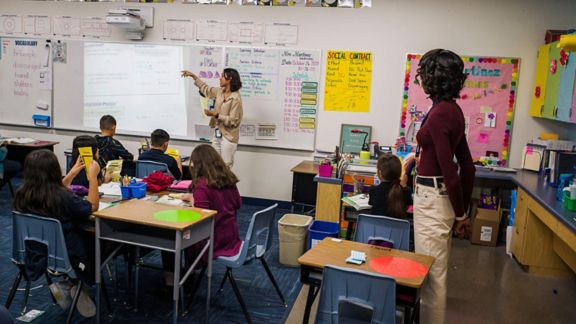Improving Racial Equity in Higher Education Organizations

Problem
Graduation rates are unequal in higher education.
Countless programs have tried to equalize college graduation rates across race and socioeconomic status, but most have fallen short. In response, the Partnership for College Completion (PCC) developed a facilitated collaborative, the Illinois Equity in Attainment Initiative (ILEA). ILEA is dedicated to guiding and supporting colleges and universities in achieving equitable college completion rates through the development and enactment of equity plans. Comprising 25 public and private, 2- and 4-year institutions, ILEA members enroll 40 percent of all undergraduates in Illinois, including 68 percent of Latinx undergraduates and 42 percent of Black undergraduates. NORC received funding from the William T. Grant Foundation to study how these colleges and universities can implement organizational change to better support Black and Latinx students’ college completion outcomes.
Solution
NORC investigated equity-mindedness in equity plans and their implementation.
NORC and Fordham University conducted comparative, qualitative case studies with six of ILEA's member institutions from November 2021 to May 2023. Variations in institutional characteristics and student outcomes (such as 2-year versus 4-year, public versus private, and disparities in graduation rates) enabled us to explore how potentially overlooked organizational factors and racial beliefs contributed to the choice and spread of institutional policies and the ways a facilitated collaborative supported efforts to promote equity.
Result
Findings suggest that institutions benefited from being in the partnership but focused on improving college completion for all students rather than targeting completion for Black and Latinx students.
Our study found that institutions embraced the opportunity to engage with a network of local colleges and universities through the ILEA program and engaged deeply, taking the bold step of posting publicly available data disaggregated by race and income. In addition, the process of creating an equity plan brought stakeholders within each institution to the table to talk about race and develop a shared understanding of equity. All chose high-impact practices and were working towards becoming more equity minded. Having an external accountability partner also helped some institutions develop and enact their chosen equity policies.
However, despite their knowledge of best practices and PCC’s encouragement that strategies be tailored for Black and Latinx students, many member institutions created strategies aimed at improving outcomes for all students rather than for the focal students. In addition, although their equity plans received strong buy-in from high-level leaders, they did not always build in student voices or include detailed budgets to ensure the sustainability of their initiatives.








